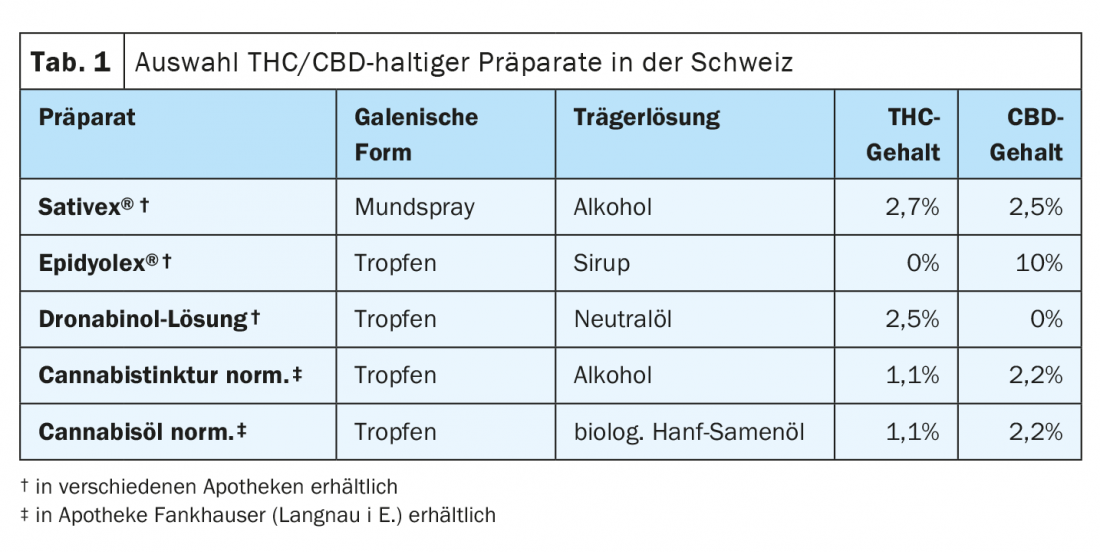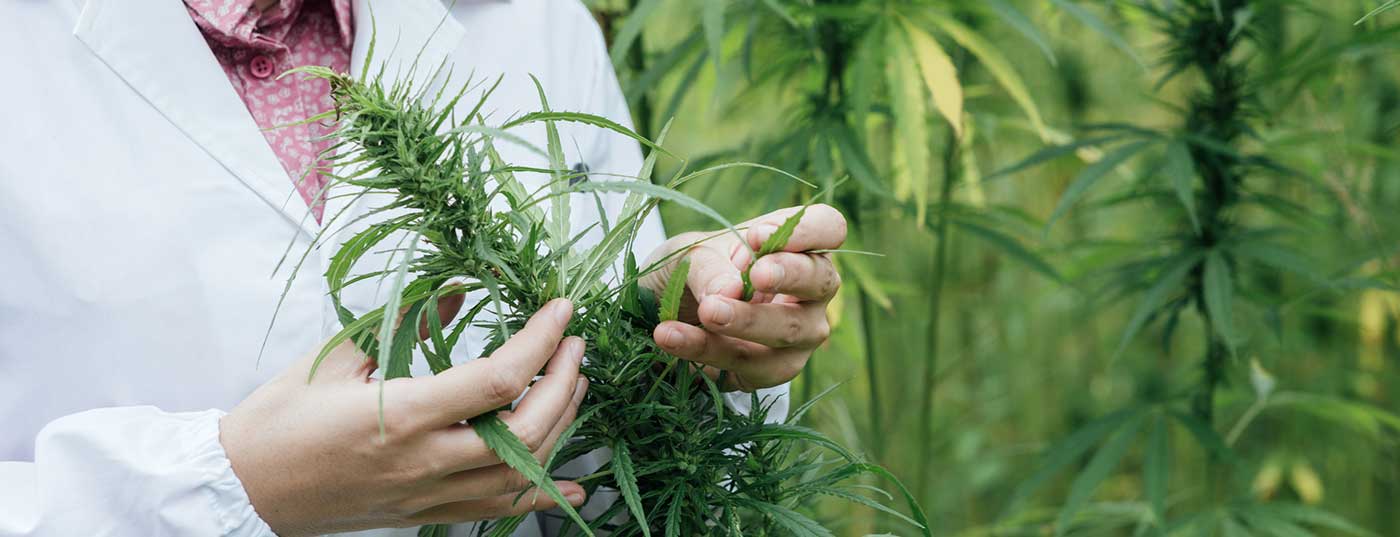Interest in the medicinal use of cannabinoids has increased greatly in recent years due to their wide range of applications and numerous reports of successful treatments. As of August 1, 2022, THC-containing cannabis medicines can also be prescribed by physicians without authorization from the FOPH, but the use of cannabis for non-medical purposes remains prohibited.
Cannabis with a THC content of at least 1% was considered a prohibited narcotic in Switzerland until recently. Until now, an exemption permit from the Federal Office of Public Health (FOPH) was required for medical prescriptions. This has now changed. The amendment to the Narcotic Drugs Act (BetmG) passed by Parliament in March this year significantly facilitates access to cannabis medicines [1]. The amendment to the law*, which came into force on 1.8.2022, means that cannabis with an average total THC content of at least 1% for medical purposes or pharmaceutical production will henceforth be classified as a controlled narcotic with restricted marketability (this also includes morphine or methadone) [2,3].
* BetmVV-EDI SR 812.121.11

Increased demand in various indication areas
There is ample evidence of therapeutic success with the use of cannabinoids. In recent years, the demand for such preparations has grown: from 2012 to 2019, the FOPH granted around 15 000 exemptions [2]. Since this number no longer corresponded to the exceptional character in the sense of the BetmG and was accompanied by a large administrative effort on all sides, a revision of the law was considered necessary. According to FOPH orders documented during 2008-2021, pain conditions (e.g., tumor pain) are the most common indication for THC-containing cannabis medicines, followed by spasticity, neuropathies, and multiple sclerosis (MS). In addition, prescriptions were issued in the areas of appetite increase/cachexia, RLS, and tics. The bioactive substances Δ9-tetrahydrocannabinol (THC) and cannabidiol (CBD) exert their effect in the so-called endocannabinoid system. This is an endogenous regulatory system that plays an important role in the central nervous system and the immune system. In this context, the pharmacological effects of THC and CBD come about particularly through binding to cannabinoid (CB)-1 and CB2 receptors [4].
|
Physician reporting requirement for evaluation purposes. In order to monitor the development of cannabis medicine prescribing and to gain more evidence on its effects, a concomitant data collection will be conducted. Prescribing physicians are required to submit treatment information to the Federal Office of Public Health during the first few years after the amendment comes into effect (mandatory reporting). The data collection will serve as a basis for the scientific evaluation of the revision, as well as provide guidance to the responsible cantonal enforcement agencies and prescribing physicians. |
Expanding the scientific evidence base
The amendment does not change the requirements for reimbursement of cannabis medicines [1]. The treatments are currently only reimbursed by the compulsory health insurance in exceptional cases. The Federal Council has had it examined whether there is a need for action. However, the available evidence on the efficacy and cost-effectiveness of cannabis medicines is currently insufficient for general reimbursement. Of particular interest are the pharmacological mechanisms and effects of THC and CBD – the two most highly concentrated substances in the cannabis plant [5]. THC is a partial CB1/CB2 receptor agonist that, according to current knowledge, has intoxicating, antispasmodic, antiemetic, analgesic, and appetite-stimulating properties [6]. CBD (cannabidiol) is a CB1/CB2 receptor agonist-antagonist/modulator [6]. Unlike THC, CBD has no intoxicating or addictive effects, but has mainly anti-inflammatory, anti-epileptic, anti-psychotic as well as analgesic effects.

Table 1 lists a selection of CBD/THC-containing medicinal products available in Switzerland. Synthetic or semi-synthetic THC extracts derived from hemp plants are mainly used for tumor pain treatment and symptom control in palliative medicine, chemotherapy-associated nausea and underweight in tumor and AIDS patients, painful spasticity in multiple sclerosis, and chronic neuropathic pain. Areas of use for CBD-containing preparations include early childhood and refractory forms of epilepsy, certain mental health problems, and several other indications. Prof. Dr. Tibor Harkany, neurobiologist and head of the Department of Molecular Neuroscience at MedUni Vienna’s Center for Brain Research, notes a contradictory phenomenon: “We know that cannabis could be used for many diseases, and to some extent we also know how it works. But these many products also give the impression that it helps with everything and nothing. However, cannabis is not a miracle plant, but can be used very specifically and for this we urgently need several evidence-based scientific clinical studies” [7].
Literature:
- BAG: Cannabis Medicines Law Amendment, www.bag.admin.ch/bag/de/home/medizin-und-forschung/heilmittel/med-anwend-cannabis/gesetzesaenderung-cannabisarzneimittel.html, (last accessed Aug. 09, 2022).
- New approach to prescribing cannabis medicines, amendment to the Narcotics Act, FOPH, July 29, 2022.
- Swissmedic: Explanatory report on the adaptation of the Ordinance of the FDHA on the Schedules of Narcotics, Psychotropic Substances, Precursors and Auxiliary Chemicals (Narcotics Schedule Ordinance, BetmVV-EDI, SR 812.121.11), August 2021.
- Grotenhermen F: Hemp as medicine. A practical guide. Solothurn: Nachtschatten Verlag, 2015, 40-52.
- Keimpema E, Di Marzo V, Harkany T: Biological basis of cannabinoid medicines. Science 2021; 374(6574): 1449-1450.
- Fankhauser M: Cannabis as medicine. Manfred Fankhauser, Langnau SRO AG, Pain Clinic, Langenthal, Jan. 24, 2019
- “Cannabis in Medicine: Enormous Therapeutic Potential, but Essential Studies Still Missing,” MedUni Vienna, Dec. 17, 2021, www.meduniwien.ac.at/web/ueber-uns/news/2021/news-im-dezember-2021/cannabis-in-der-medizin-enormes-therapeutisches-potenzial-aber-wesentliche-studien-fehlen-noch (last accessed Aug. 09, 2022).
- Swiss Society for Cannabis in Medicine, www.sgcm-sscm.ch/sites/default/files/documents/patienteninformation-sgcm_final_0.pdf
- BAG: Medical use of cannabis, (last accessed 09.08.2022) www.bag.admin.ch/bag/de/home/medizin-und-forschung/heilmittel/med-anwend-cannabis.html (last accessed 09.08.2022)
- Fankhauser M: Cannabis on prescription – Situation in Switzerland, 2021, www.swissmedic.ch/swissmedic/de/home/legal/pharmacopoea/wichtige-informationen/expertentagung-pharmakopoee-online.html (last accessed 09.08.2022).
HAUSARZT PRAXIS 2022; 17(8): 22-23












